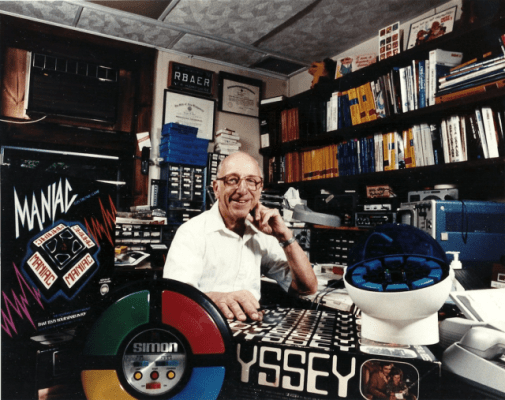On weekends, my basement could be considered a shrine and church to Ralph Baer. It is there that my children congregate and play video games for hours, a pastime now as familiar as gathering around an open flame was to our early forbears. Ralph Baer, who died on December 6 at the age of 92, lit a thousand digital fires in a thousand cozy living rooms. He was the grandfather of gaming.
A German immigrant, Baer dreamed up the first “game box” while lounging outside of the Port Authority Bus Terminal in Manhattan. His invention, eventually dubbed the Magnavox Odyssey and launched in 1972, pulled video games out of grimy bars and smoky pinball halls and into the home where it has stayed for over four decades.
Baer’s vision was of a “brown box” that would connect to the television and send signals over the RF connection. Essentially a tiny electronic TV studio in a plastic case, he and Magnavox came up with an ingenious solution for giving children (and adults) an interactive home gaming experience. The system, when launched, included a version of football, a target shooting game, and an early version of tennis that predated Atari’s Pong. Sales were slow at first but quickly exploded. By 1974 Magnavox had sold three hundred and fifty thousand Odyssey at about $100 each.
Baer was born in Cologne and fled to New York with his family in 1938. He returned to Europe during WWII where he worked as a radio technician and intelligence officer. Upon returning to New York he began working on defense-related radio projects but the dream of a game-playing television hounded him. The key, he discovered, was to separate the television display from the game, thereby making it easy to upgrade rather than buy a whole new set.
His were not the first video games in existence – there were glimmers of a digital future on the horizon as early as 1958 – but the “brown box” was the first to capture the imaginations of countless proto-hackers. By bringing gaming into the home he was able to breed countless programmers, endless computer graphics artists, and countless game designers who were all draw to his soundless box like moths to a flame. Baer went on to build Simon, a battery-powered color matching game, as well as pioneer the musical greeting card. With over 150 patents to his name he was essentially an invention engine with an eye towards play and every time we fire up our iPads or turn on our wireless controllers we owe him – and his flash of inspiration – a debt of gratitude.
